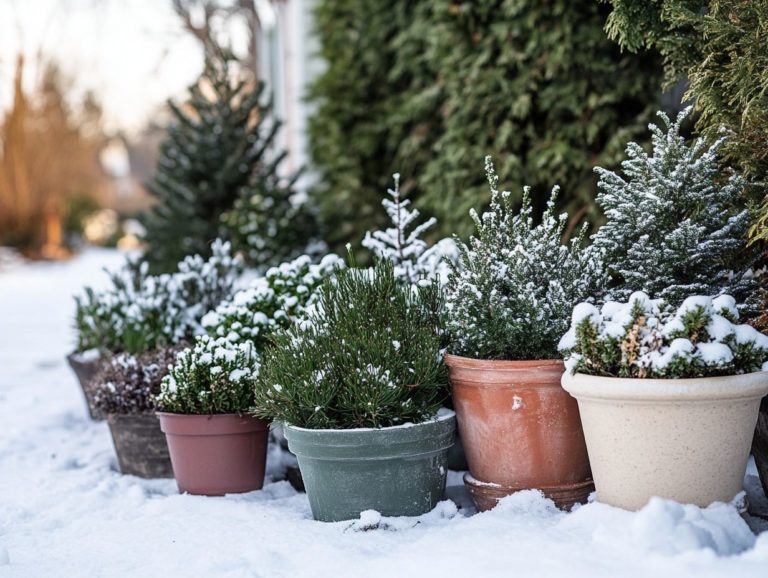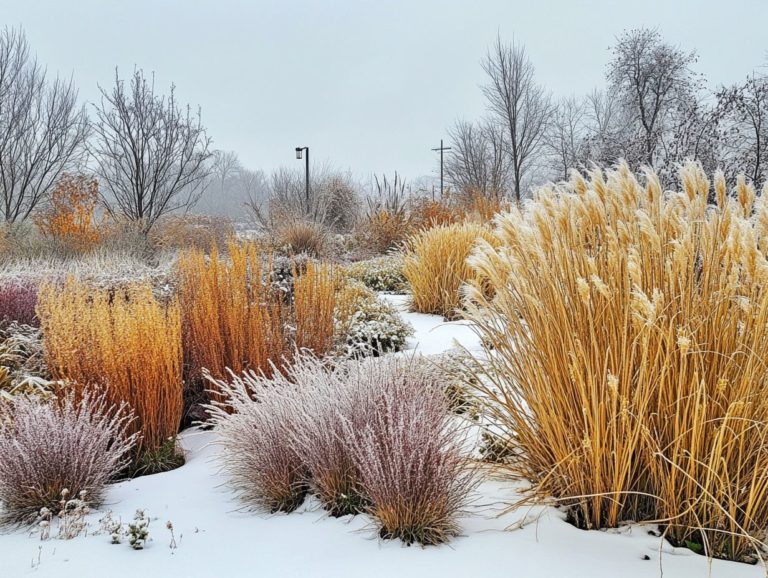Cold-Climate Gardening: Best Plant Combinations
Cold-climate gardening offers distinctive challenges and exciting opportunities for those passionate about nurturing vibrant plants, even in the face of frost and snow.
This article delves into the advantages of gardening in cooler temperatures, outlines the best plant varieties that thrive in such climates, and highlights effective companion planting strategies to enhance growth and health.
You ll uncover tips for maximizing your garden space while tackling common weather-related obstacles with confidence.
Immerse yourself in the realm of cold-climate gardening and unveil the secrets to cultivating a flourishing garden!
Contents
- Key Takeaways:
- Benefits of Cold-Climate Gardening
- Choosing the Right Plants for Cold Climates
- Companion Planting in Cold Climates
- Maximizing Space in Cold-Climate Gardens
- Dealing with Common Challenges in Cold-Climate Gardening
- Frequently Asked Questions
- What are the benefits of using the best plant combinations in cold-climate gardening?
- Which plants thrive in cold-climate gardens?
- How do I choose the best plant combinations for my cold-climate garden?
- What are some examples of beautiful plant combinations for cold-climate gardens?
- Can I use annuals in my cold-climate garden?
- Are there any plant combinations to avoid in cold-climate gardening?
Key Takeaways:
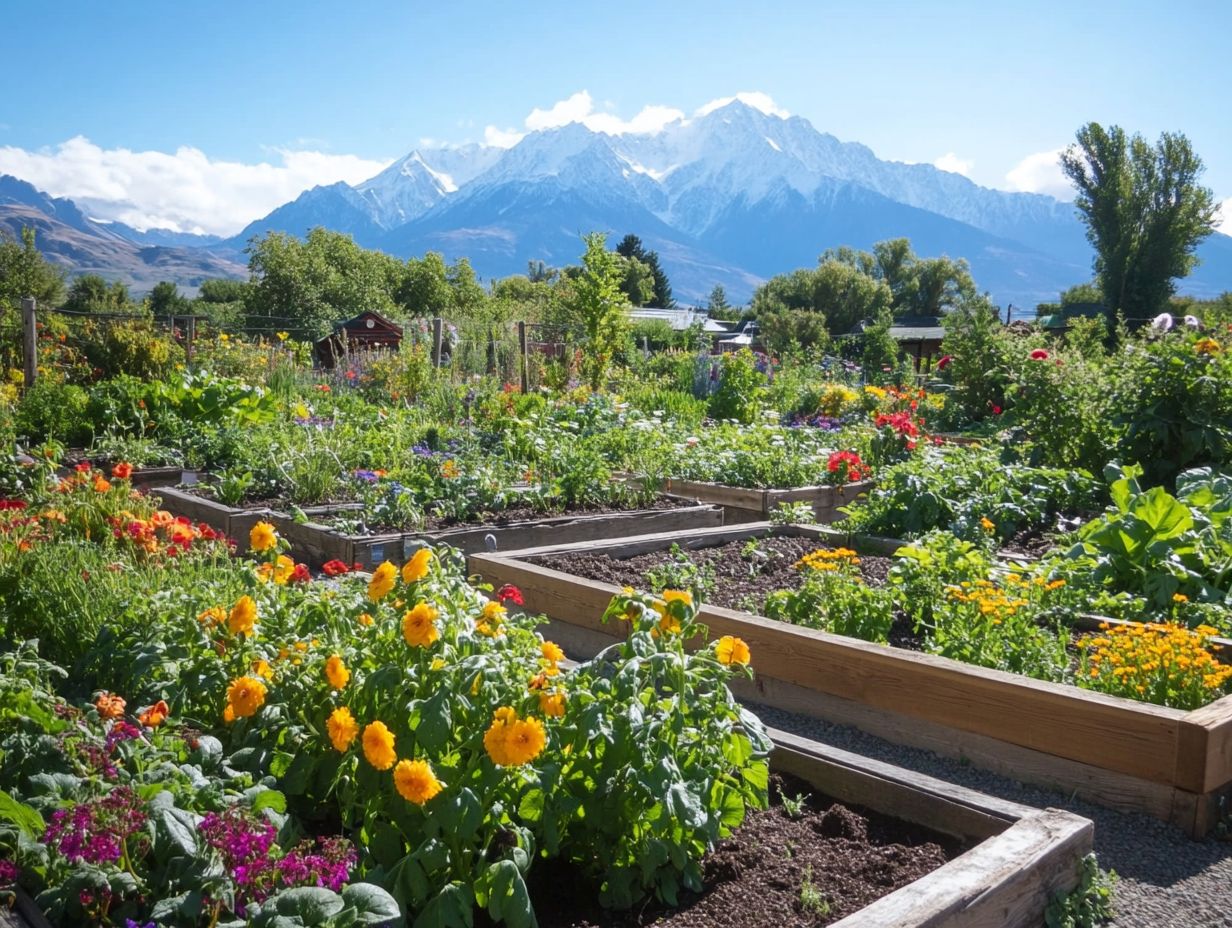
- Cold-climate gardening offers numerous benefits for plant growth and health, making it a worthwhile endeavor for any gardener.
- Careful plant selection and strategic companion planting are essential for success in cold climates, where extreme weather conditions can pose challenges for plant survival.
- Maximizing space and effectively dealing with common challenges, such as frost and snow, are key strategies for achieving a thriving cold-climate garden.
What is Cold-Climate Gardening?
Cold-climate gardening is all about cultivating plants in regions known for their long winters and short growing seasons, like Montana and Ohio. These areas sit within USDA Hardiness Zone 3, a classification system that helps identify which plants can thrive in particular climates. This approach requires you to employ specific strategies designed to tackle challenges such as frost and fluctuating temperatures.
With the right soil preparation and carefully chosen plant varieties, you can enjoy a thriving garden even in the chillier parts of the world.
Understanding frost dates is essential for you as a cold-climate gardener; it gives you the power to pinpoint the optimal times for planting and harvesting.
This knowledge safeguards you against unexpected frosts, ensuring that your crops have the best chance to flourish.
In contrast to the luxuries of warmer climates with extended growing seasons, cold-climate gardening often necessitates selecting hardier varieties that excel in cooler conditions.
By utilizing techniques like row covers, creating raised beds, and implementing cold frames, you can create a protective environment for your more sensitive plants, boosting your chances of success.
By embracing these methods, you can unlock your garden’s full potential and watch it thrive! Achieve vibrant and fruitful plots year after year.
Benefits of Cold-Climate Gardening
Cold-climate gardening presents a wealth of advantages, including valuable soil preparation tips, that allow you to flourish even in challenging environments.
It enables you to cultivate hardy plants perfectly adapted for shorter growing seasons and tougher conditions.
Use raised beds and prepare your soil carefully. This improves drainage and warmth, resulting in healthier plants and a more bountiful harvest.
Advantages for Plant Growth and Health
The benefits of cold-climate gardening profoundly influence your plants growth and overall health. By embracing specialized practices, you can enhance soil quality and optimize your watering techniques.
Utilizing mulch and compost allows you to create a nurturing environment that fosters robust growth in your vegetables, herbs, and ornamental plants.
This strategy not only enriches the soil with essential nutrients but also retains moisture, leading to less frequent watering an invaluable benefit during drier spells.
Implementing specific techniques like crop rotation and intercropping can effectively manage pests, ensuring that your kale, carrots, and peonies thrive.
By gaining a deeper understanding of the unique growth requirements of each species, you can fine-tune your gardening practices.
This adaptability ensures that your garden flourishes even in the harshest conditions. Such tailored methods are essential for achieving sustainable and productive cold-climate gardening.
Start your cold-climate gardening adventure now, and turn your challenges into a bountiful harvest!
Choosing the Right Plants for Cold Climates
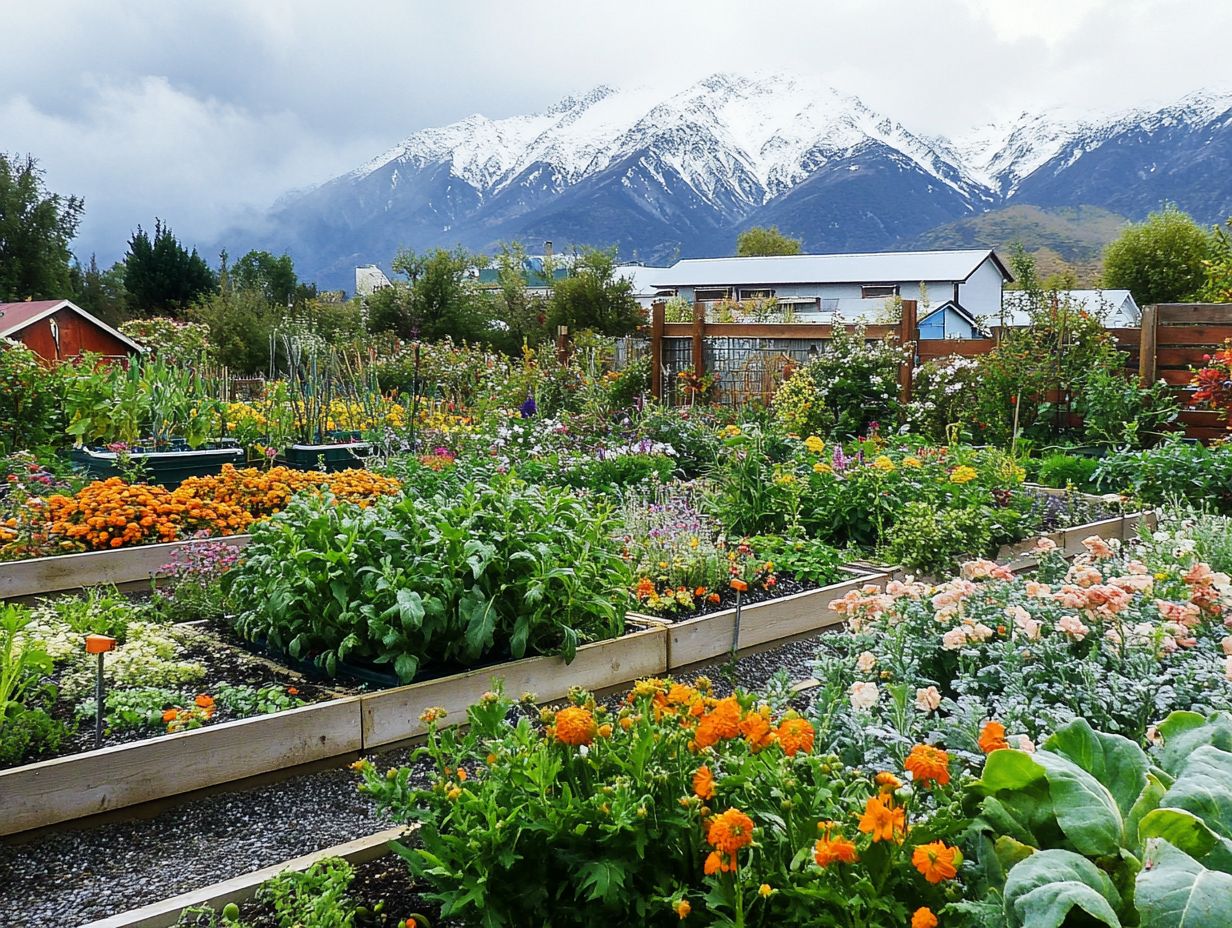
Selecting the right plants is essential for achieving success in cold-climate gardening. By selecting plants for cold climate community gardens that are specifically adapted to endure cold temperatures and short growing seasons, you can truly transform your gardening experience!
Consider options like tomatoes, onions, and a selection of herbs such as sage and oregano. When you carefully select plants suited for your specific USDA Hardiness zone, you set the stage for a vibrant and productive garden that flourishes despite the challenges of a colder climate.
Recommended Plant Varieties
For cold-climate gardeners like you, choosing the right plant varieties is absolutely crucial. Consider exploring cold-climate gardening: understanding plant needs to make strong and fruitful choices such as tomatoes, peas, beans, and delightful herbs like lavender and sage.
You can enhance your garden’s appearance and biodiversity by incorporating annuals like sweet William. Additionally, stunning perennials such as delphinium will elevate your garden’s charm.
Some of those tomato varieties thrive even in shorter growing seasons, allowing you to enjoy rich harvests despite the chill. Peas are particularly frost-tolerant and can be sown early, making them perfect for those eager to maximize their yields before the summer heat sets in!
Beans not only produce their bounty but also fix nitrogen in the soil, benefiting their neighboring plants. And let s not forget about herbs like lavender and sage, which bring culinary delights while attracting pollinators to your garden.
Sweet William adds vibrant color and requires minimal care, while delphiniums bloom profusely, providing vertical interest to your landscape. Together, these selections empower you to create a garden that truly flourishes, even amidst the challenges of cold climates!
Companion Planting in Cold Climates
Companion planting in cold climates is a smart gardening method that encourages you to position compatible plants close together. For those looking to optimize their space, knowing how to plan your cold-climate garden layout can enhance growth, deter pests, and nurture soil health.
Not only does this technique optimize your available space, but it also cultivates beneficial relationships among plants, resulting in a diverse and flourishing garden ecosystem.
Benefits and Strategies for Successful Combinations
The benefits of companion planting in cold climates go well beyond mere aesthetics; they encompass improved pest management and enhanced soil quality through strategic plant combinations. Additionally, using the top 5 planters for cold-climate gardening can further optimize your efforts. By considering plant compatibility, you can achieve healthier and more robust yields of vegetables and herbs throughout the growing season!
For instance, when you pair cold-tolerant vegetables like kale with aromatic herbs such as rosemary, you not only elevate flavor but also help to keep pests at bay. Including nitrogen-fixing plants like legumes can further enrich your soil, supporting neighboring crops even in harsh weather conditions.
These plant combinations create a strong garden ecosystem, making it easier for you to fend off invasive species and reduce reliance on chemical solutions. To maximize the benefits of companion planting, consider rotating your plant combinations each year. This practice ensures optimal nutrient uptake and maintains a balanced soil dynamic capable of withstanding winter s chill.
Thoughtful pairings can significantly enhance the vitality of your entire garden!
Maximizing Space in Cold-Climate Gardens
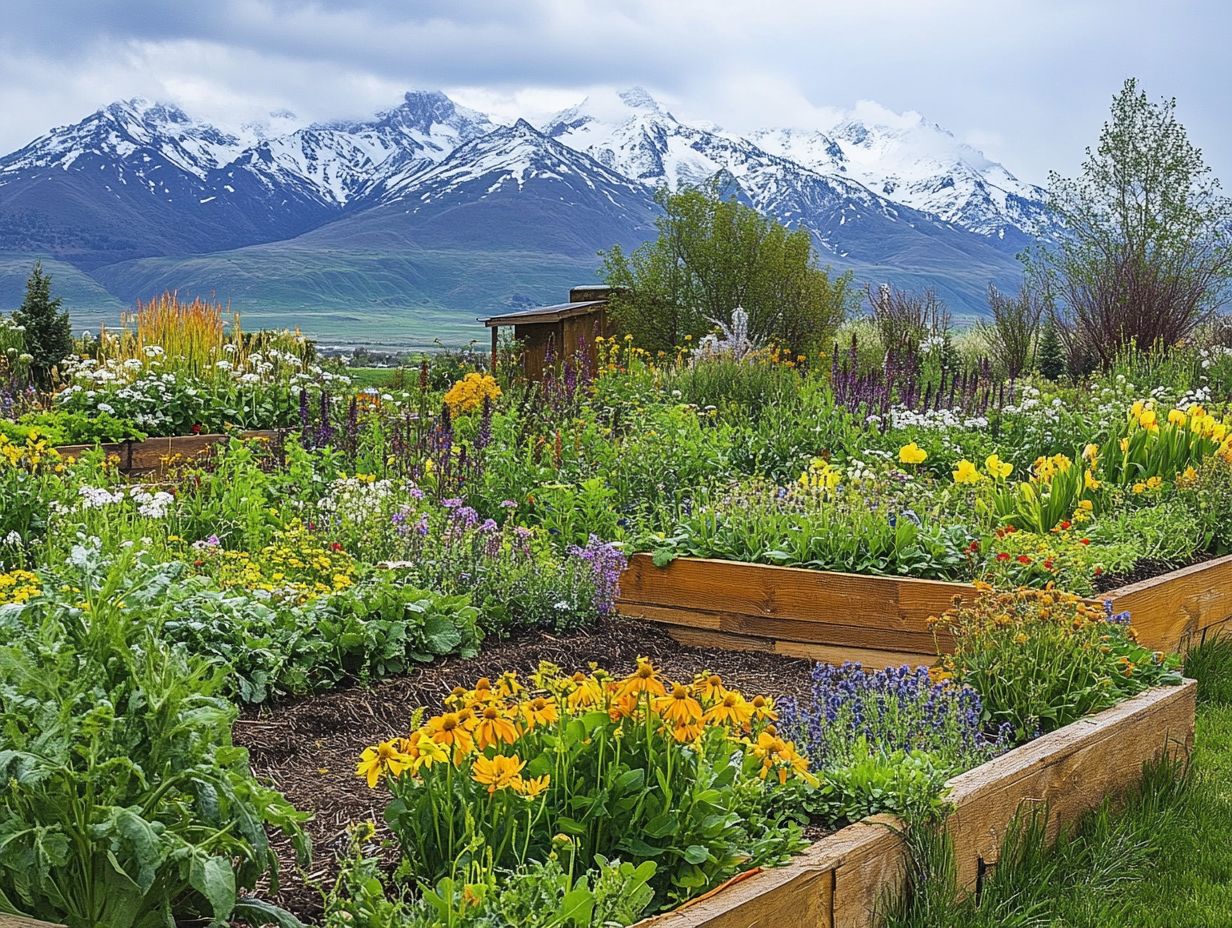
Maximizing space in cold-climate gardens is crucial for achieving a bountiful harvest, particularly in regions with shorter growing seasons. By employing techniques such as raised beds and vertical gardening, you can dramatically enhance your yield while optimizing the available space.
This approach not only allows you to cultivate a wider variety of vegetables, herbs, and flowers but also transforms your garden into a thriving and diverse oasis!
Tips for Efficient Plant Placement
Efficient plant placement is crucial for the success of your cold-climate garden. It ensures that each plant receives the sunlight, water, and nutrients it needs. Understanding the specific requirements of each variety, including their ideal sunlight exposure and moisture levels, is essential.
When planning your layout, think about grouping plants with similar watering needs together. This approach streamlines maintenance and minimizes waste. By positioning your plants strategically, you can enhance air circulation and lower the risk of disease.
Incorporating companion planting is another smart move. It maximizes your space and promotes natural pest management. Certain plants can deter harmful insects while attracting beneficial ones.
By carefully considering these factors, you can create a vibrant ecosystem that will amaze you and your neighbors!
Dealing with Common Challenges in Cold-Climate Gardening
Cold-climate gardening presents distinct challenges, including frost, snow, and shorter growing seasons. To overcome these issues, consider exploring sustainable plant choices for cold climates, as these factors demand meticulous planning and preparation.
By understanding these hurdles and implementing effective strategies for soil preparation and plant selection, you can cultivate resilient gardens that flourish despite environmental constraints.
Strategies for Frost, Snow, and Other Weather Conditions
Implementing effective strategies for managing frost, snow, and other weather conditions is essential for success in cold-climate gardening. Techniques like using mulch for insulation and employing greenhouses to extend your growing seasons are beneficial.
Choosing frost-resistant plant varieties will also help ensure your garden thrives. You can enhance your gardening efforts by utilizing row covers that provide protection against harsh elements while allowing sunlight and moisture to reach your plants.
Incorporating cold frames can create a small area with a different climate than its surroundings, nurturing delicate seedlings during unpredictable weather. Investing in the right gardening supplies, such as frost cloths and thermal blankets, is crucial for protecting your plants as temperatures drop.
To extend your growing season, consider using season extenders like plant covers or hoop houses. These tools provide the necessary warmth, allowing you to cultivate a variety of crops even during the colder months.
Watch this video for more tips on cold-climate gardening!
Frequently Asked Questions
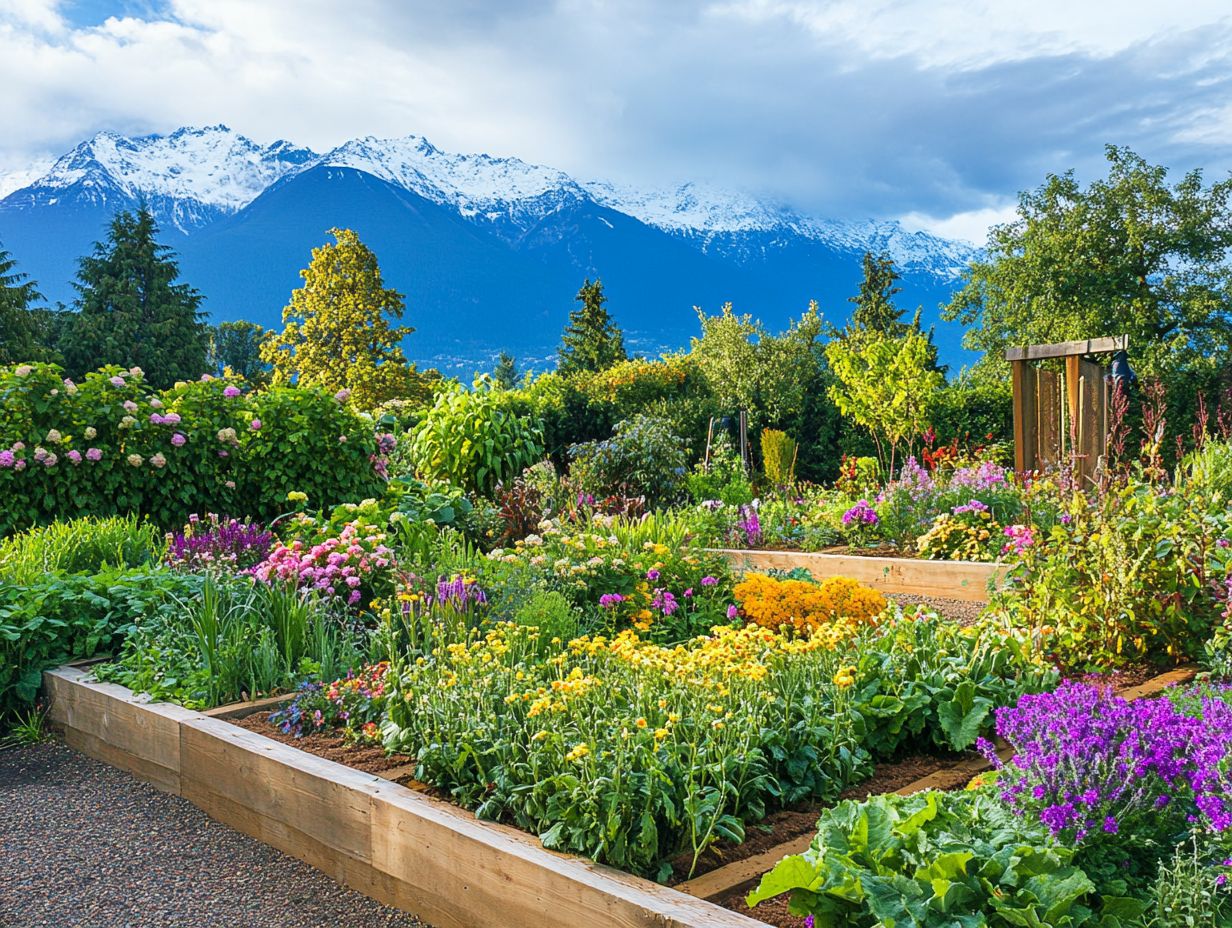
What are the benefits of using the best plant combinations in cold-climate gardening?
Using the best plant combinations helps maximize space, provide visual interest, and improve overall plant health. When it comes to specific environments, cold-climate gardening: choosing the right grasses can make a significant difference in creating a cohesive and beautiful garden.
Which plants thrive in cold-climate gardens?
Some popular plants for cold-climate gardens include conifers, evergreens, and hardy perennials like hellebores, hostas, and daylilies. For more insights, consider selecting cold-climate plants for urban gardens that withstand harsh conditions and add color and texture to your garden.
How do I choose the best plant combinations for my cold-climate garden?
When choosing plant combinations, consider the individual growing requirements, such as sun exposure and soil type. Selecting plants with similar water and fertilization needs ensures they thrive together.
What are some examples of beautiful plant combinations for cold-climate gardens?
A popular combination is using evergreen shrubs as a backdrop for colorful, cold-hardy perennials like Siberian irises and peonies. For those interested in maximizing their garden’s potential, exploring cold-climate gardening techniques can be beneficial. Pairing ornamental grasses with late-blooming perennials like sedums and asters adds texture and interest to your garden.
Can I use annuals in my cold-climate garden?
Although many annuals may not survive in cold climates, some options can add color and variety. Cold-hardy annuals like pansies, violas, and snapdragons thrive in colder temperatures and provide color throughout the season.
Start your cold-climate gardening journey today and explore the joy of cultivating beautiful plants!
Are there any plant combinations to avoid in cold-climate gardening?
Avoid planting species with different water and fertilization needs in the same bed. This mismatch can harm plant health.
Also, consider how big plants will get when they reach their full size. Overcrowding can stunt growth and cause other issues.




